#artemisiagentileschi
Text
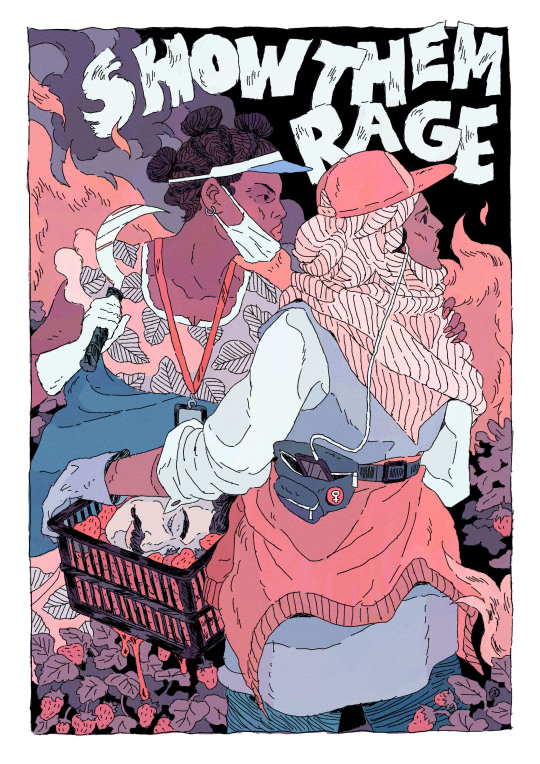
Judith and Her Maidservant
47 notes
·
View notes
Text
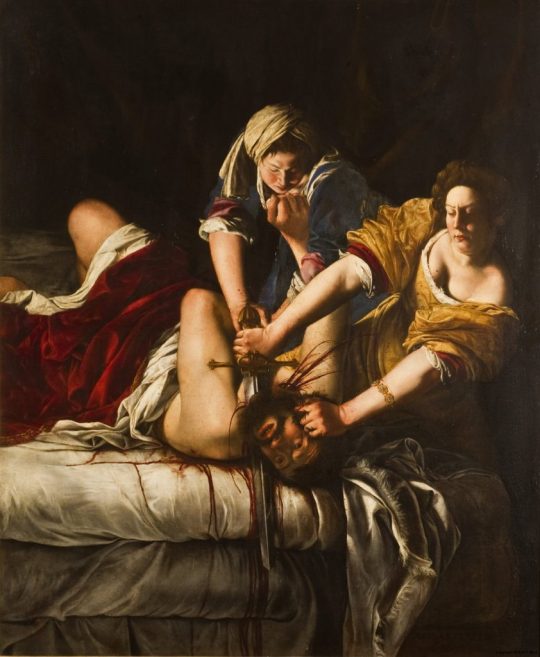

Judith Beheading Holofernes, Gentileschi vs. Caravaggio
the drama resides solely in the tenebrism of Caravaggio's rendition, with his figures appearing too relaxed for such an intimate crime. On the other hand, we get total fierceness in Gentileschi's scene (e.g., the women's active muscles, facial expressions, & positions), making it more dire, more savage. Which one are you more drawn to?
5 notes
·
View notes
Photo
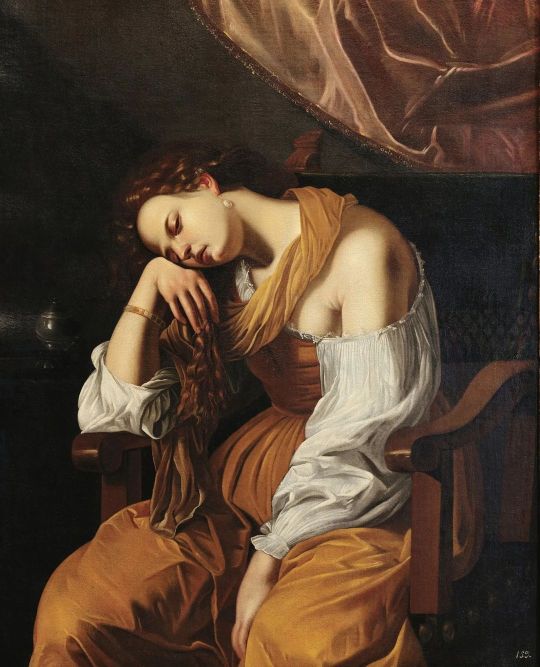
#Repost @dailyartmagazine Artemisia Gentileschi, Repentant Mary Magdalene, 1622-1625, Catedral de Sevilla, Sevilla, Spain. Artemisia Gentileschi was one of the best Italian Baroque painters. This strong woman painted plenty of paintings of strong and suffering women from both mythology and the Bible. Considered to be a genius and at the same time a curiosity, as being a painter was a profession available mainly to men, she also survived a horrible story. Gentileschi was sexually assaulted by her mentor Agostino Tassi when she was 18 years old, leading to Gentileschi being thrust into the middle of a rape case that received considerable publicity and ruined her reputation. Tassi was convicted but released by the judge who also ordered Gentileschi to be tortured as a means of proving her honesty. Read how these events affected Artemisia's paintings ➡️ Artemisia Gentileschi: The Rape Survivor and Her Revenge [🔗link in bio] 🖋️ Zuzanna Stańska @zstanska follow @dailyartmagazine for more art history content! #artemisiagentileschi #baroque #womenartists #femaleartist #art #arthistory #historyofart https://www.instagram.com/p/ClLVcG_oYUu/?igshid=NGJjMDIxMWI=
3 notes
·
View notes
Text
Judith Slaying Holofernes

Artemisia Gentileschi, Judith Beheading Holofernes (1620). Oil on canvas, 146.5 x 108 cm. Museo Capodimonte, Naples.
Artemisia Gentileschi's Judith Slaying Holofernes stands as one of the most vivid and dramatic works in the realm of Baroque painting, encapsulating themes of courage, justice, and female empowerment. This post delves into the artistic and symbolic nuances of Gentileschi’s iconic painting, offering a deep dive into its historical context, visual analysis, and enduring impact.
The Power and Fury: A Closer Look at Gentileschi's Masterpiece
Artemisia Gentileschi, born in 1593 in Rome, was one of the first women to achieve recognition in the male-dominated world of post-Renaissance art. Judith Slaying Holofernes is often viewed through the lens of Gentileschi's personal history, particularly her experience with sexual assault and the subsequent highly publicized trial. The painting, created in the early 1620s, is interpreted by many as a form of cathartic expression, showcasing her mastery over her traumas and her assailants.
The Art of Contrast: Tenebrism in Judith Slaying Holofernes
The painting depicts the biblical story of Judith, a widow who saves her village from the Assyrian general Holofernes by seducing and then beheading him. Gentileschi’s rendition is remarkable for its intense realism and emotional power. Unlike other contemporary versions of the subject, Gentileschi’s Judith appears strong and resolute in her task, capturing a moment of intense physical and psychological action.
Defiance in the Details: Symbolism in Gentileschi's Narrative
In Judith Slaying Holofernes, Gentileschi aligns herself with Judith, symbolically enacting a narrative of female agency and vengeance. This work is often read as a proto-feminist statement, with Judith’s act representing a broader defiance against patriarchal oppression. The painting challenges traditional gender roles and reflects Gentileschi's own struggles against the societal limitations imposed on women of her time.
Artemisia Gentileschi's Legacy: Reclaiming Space and Narrative
Artemisia Gentileschi's work has experienced a resurgence of interest in recent years, celebrated for its bold thematic content and its reflection of the artist's personal narrative of overcoming adversity. Judith Slaying Holofernes not only contributes to the historical narrative of art but continues to inspire discussions on gender, power, and resilience.
A Canvas of Courage: The Timeless Message of Judith Slaying Holofernes
Judith Slaying Holofernes by Artemisia Gentileschi is not just a depiction of a biblical heroine, but a profound commentary on justice, courage, and the capabilities of women both in art and in life. It remains a powerful image of defiance and autonomy, resonating with audiences centuries after it was painted.
Reflect and Engage
How do you think Judith Slaying Holofernes challenges or reinforces the perceptions of women both in the era it was painted and today? Does the painting's violent imagery detract from or enhance its message of female empowerment?
#ArtemisiaGentileschi#JudithSlayingHolofernes#BaroqueArt#FeministArt#ArtHistory#WomenInArt#PowerfulPaintings#ArtisticExpression#HistoricalArt#ArtAndResistance#artblogger
0 notes
Photo
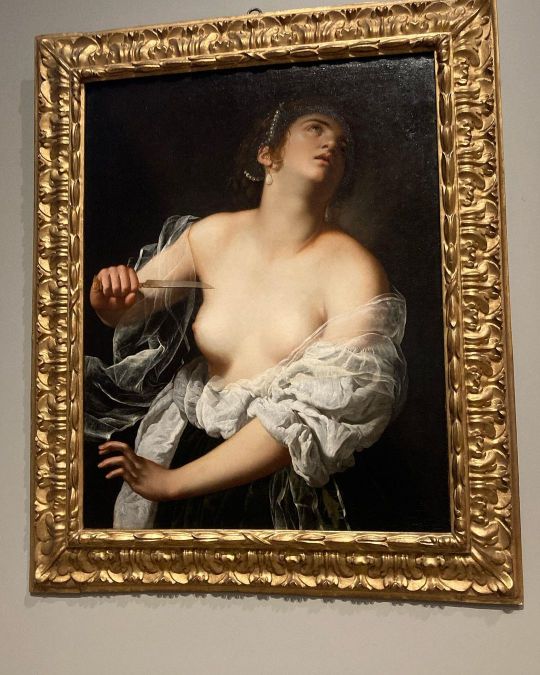
✨Happy National Woman’s Day ✨ Artemisia Gentileschi and the Female Hero. She was a independent and successful person when art was male dominated. ( July 17th, 2022 ) 🎨🖼️👩🎨🎭 #nationalwomensday #art #painting #gettymuseum #thegettymuseum #artemisiagentileschi #femalehero #artist (at The Getty Museum, LA) https://www.instagram.com/p/CpjKCmVJUkx/?igshid=NGJjMDIxMWI=
1 note
·
View note
Photo

Artemisia Gentileschi Kimdir? Hayatı ve Eserleri
0 notes
Photo
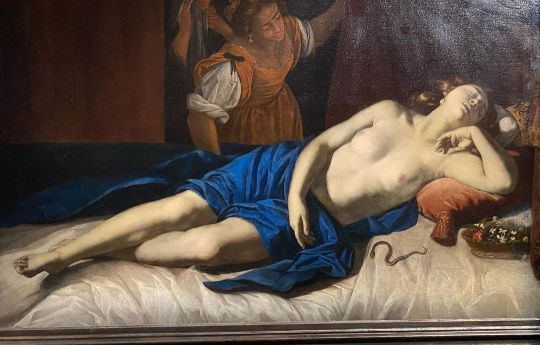
Cleopatra, il mio preferito- #artemisiagentileschi #study #cleopatra #painting #transcription #favorite #today #studiolife https://www.instagram.com/p/Co7OqoRsDdO/?igshid=NGJjMDIxMWI=
0 notes
Photo

During the month of January, "Eternally Artemisia," my novel set in Tuscany, Rome, and beyond… is a featured book of the month on the "Women Writer's" Organization website and social media sites. The novel tells the story of the painter Artemisia Gentileschi and explores the idea that some loves are destined to reunite repeatedly through time. Eternally Artemisia - Some loves, like some women, are timeless They say some loves travel through time and are fated to meet over and over again. For Maddie, an art therapist, who wrestles with the “peculiar feeling” she has lived previous lives and is being called to Italy by voices that have left imprints on her soul, this idea is intriguing. Despite her best efforts, however, proof of this has always eluded her. That is, until one illuminating summer in Italy when Maddie’s previous existences start to bleed through into her current reality. When she is introduced to the Crociani family—a noble clan with ties to the seventeenth-century Medici court that boasts of ancestors with colorful pasts—she finally meets the loves of her life. One is a romantic love, and another is a special kind of passion that only women share, strong amongst those who have suffered greatly yet have triumphed despite it. As Maddie's relationship develops with Artemisia Gentileschi—an artist who in a time when it was unheard of to denounce a man for the crime of rape, did just that—Maddie discovers a kindred spirit and a role model, and just what women are capable of when united together. In a journey that arcs back to biblical days and moves forward in time, Maddie encounters artists, dukes, designers, and movie stars as well as baser and ignoble men. With Artemisia never far from her side, she proves that when we dare to take control of our lives and find the “thing” we are most passionate about, we are limitless and can touch the stars Find your copy of "Eternally Artemisia" on Amazon in print, epub for Kindle, and as an Audiobook. Links in Bio #MelissaMuldoon #EternallyArtemisia #IndieAuthor #ArtemisiaGentileschi #ItalyNovel #EternalLove #ItalianArtist #Caravaggio #ArtTherapy #BaroqueArt https://www.instagram.com/p/CnYV92dMKbK/?igshid=NGJjMDIxMWI=
#melissamuldoon#eternallyartemisia#indieauthor#artemisiagentileschi#italynovel#eternallove#italianartist#caravaggio#arttherapy#baroqueart
0 notes
Text
Palazzi che parlano di donne e di libri
Palazzi che parlano di donne e di libri

View On WordPress
#AnnaBanti#AnneCarson#ArtemisiaGentileschi#barocco#BernardinoSpada#ClaudiaDurastanti.#ConsigliodiStato#giallo#GirolamoCapodiferro#MariaBellonci#PalazzoSpada#PilarQuintana#Ubik#Comune di Roma#feltrinelli#Libreria Spazio Sette#libri#Viviana Scarinci
0 notes
Photo

#Herstory #UnDíaComoHoy Artemisia Lomi Gentileschi (Roma, 8 de julio de 1593-Nápoles, hacia 1656) fue una pintora barroca italiana. Su formación artística comenzó en el taller de su padre, el pintor Orazio Gentileschi, uno de los grandes exponentes de la escuela romana de Caravaggio. Era su propia agente y administradora de su obra, en la que predominan las mujeres-símbolo, como Lucrecia, Betsabé, Judith o Cleopatra, enfocadas desde un punto de vista femenino. En mayo de 1611, con 18 años, el pintor Agostino Tassi, maestro suyo y amigo de su padre, la violó. Suceso que se considera que tuvo influencia tanto en su vida como en su pintura. Dio sus primeros pasos como artista en Roma, y continuó su carrera en distintas ciudades de Italia. En 1612 se mudó a Florencia. Fue la primera mujer en hacerse miembro de la Accademia delle arti del disegno de Florencia y tuvo una clientela internacional. Trabajó bajo los auspicios de Cosme II de Médici. En 1621 trabajó en Génova, luego se trasladó a Venecia, donde conoció a Anton Van Dyck y Sofonisba Anguissola; más tarde regresó a Roma, y entre 1626 y 1630 se mudó a Nápoles. Entre 1638-1641, vivió y trabajó en Londres con su padre bajo el patrocinio de Carlos I de Inglaterra. Luego regresó a Nápoles, donde vivió hasta su muerte. El interés feminista en #ArtemisiaGentileschi se inició en los 70, cuando la historiadora del arte feminista #LindaNochlin publicó el artículo ¿Por qué no han existido grandes artistas mujeres? Donde exploraba cómo las instituciones opresivas, y no la falta de talento, han impedido que las mujeres alcancen el mismo nivel de reconocimiento que los hombres recibieron en el arte y en otros campos. Artemisia no acepta los modelos establecidos de feminidad. Es una artista, que en su momento accedió a altas cuotas de independencia personal y reconocimiento de su valía creativa y ofrece algunos rasgos que «se enfrentan firmemente con los tópicos misóginos dominantes de la época». En su cuadro Susana y los viejos, un desnudo que pintó a los 16 años, no escoge como era habitual el momento del baño de Susana, sino el instante en que marcha, asustada por las miradas lujuriosas de los viejos. #efemérides https://www.instagram.com/p/CfwA28kDExl/?igshid=NGJjMDIxMWI=
1 note
·
View note
Text
Artemisia Gentileschi, de PowerVrouw van de Italiaanse Barok
Artemisia, de PowerVrouw van de Italiaanse Barok. Een Dijk van een Wijf met een turbulent leven dat een prachtig oeuvre heeft nagelaten. Toos van Holstein was er voor in Genua. Kijk en beleef het mee in deze aflevering van TOOS&ART. #expo#kunst#art
En toen was daar Caravaggio, Michelangelo Merisi da Caravaggio (1571-1610). Het behoorlijk opvliegende schildergenie dat rond 1600 menig opstootje in Rome veroorzaakte, maar daarbij ook de kunstwereld op stelten zette. Door een nieuwe, succesvolle schilderstijl te ontwikkelen. Nu het caravaggisme geheten.
Caravaggio, Salomé met het hoofd van Johannes de Doper (1610)
Gevolg: haat en nijd in dat…

View On WordPress
#Academia dell&039;Arte del Disegno#Artemisia#ArtemisiaGentileschi#bijbel#Caravaggio#caravaggisme#Cleopatra#drama#Florence#Genoa#Genova#Genua#Holofernes#Italiaanse barok#JudithHolofernes#KunstenaarsAtelier#kunstgen#kunstwereld#Londen#MeToo#Napels#NiewuTestament#opera#OrazioGentileschi#OudeTestament#PalazzoDucal#PalazzoSpinola#powervrouw#Suzanna en de Ouderlingen#Venetië
1 note
·
View note
Link
0 notes
Photo
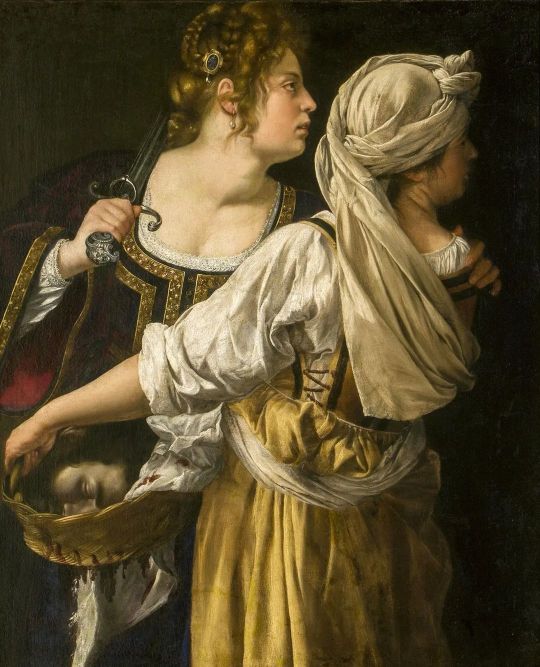
#Repost @dailyartmagazine Artemisia Gentileschi "Judith and her Maidservant" (1613–1614) Today is the National Superhero Day and at DailyArt we present you the Art Superheroes. Artemisia Gentileschi was one of the best Italian Baroque painters. This strong woman painted plenty of paintings of strong and suffering women from both mythology and the Bible. Considered to be a genius and at the same time a curiosity, as being a painter was a profession available only to men, she also survived a horrible story. Raped by her mentor Agostino Tassi when she was 18 years old, Gentileschi was thrust into the middle of a rape case that received considerable publicity and ruined her reputation. Tassi was convicted but released by the judge who also ordered Gentileschi to be tortured as a means of proving her honesty. After the trial, Gentileschi started to paint all those scenes of courageous women. Read ➡️"Artemisia Gentileschi: The Rape Survivor and Her Revenge" [🔗link in bio] ✍️Zuzanna Stańska | @zstanska 🖼️ Artemisia Gentileschi, Judith and her Maidservant, 1613–1614, Palazzo Pitti, Florence, Italy. #artemisiagentileschi #baroque #womenartists #5womenartists #femaleartist #arthistory #historyofart https://www.instagram.com/p/Cc5WO07oB-D/?igshid=NGJjMDIxMWI=
#repost#artemisiagentileschi#baroque#womenartists#5womenartists#femaleartist#arthistory#historyofart
0 notes
Text

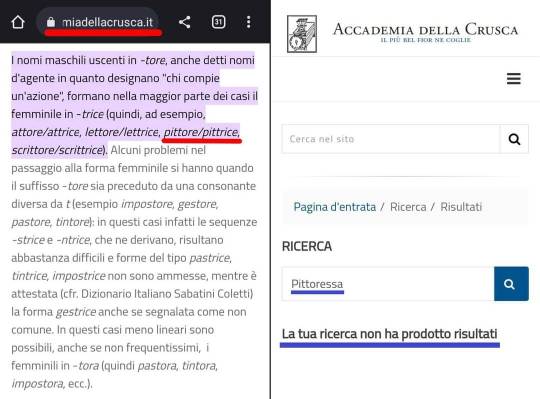
A proposito della recente notizia su Artemisia Gentileschi, è inutile che voi giornalistoidi cerchiate di creare nomi femminili per propagandare la "cultura boldriniana" e tentare l'impostazione di una neolingua... perché UFFICIALMENTE la parola "pittoressa" NON ESISTE, e a dirlo è nientepopodimeno l'Accademia della Crusca.
Qui sotto, infatti, ho riportato un paio di screenshot dal sito della Crusca: quello a sinistra spiega che il femminile di "pittore" è "pittrice", mentre quello a destra è il risultato di una ricerca con la parola "pittoressa" il cui risultato dimostra l'inesistenza della parola. Al massimo esiste nell'italiano parlato, ma ha una connotazione negativa e per questo motivo le buone intenzioni dei pennivendoli potrebbero invece, sebbene non intenzionalmente, sfociare addirittura nel sessismo.
Qui nessuno sta dicendo che bisogna declinare tutto al maschile, ma semplicemente che i cosiddetti "professionisti dell'informazione" (che però si dimostrano sempre più tutt'altro che tali) dovrebbero conoscere un minimo di ortografia. La lingua italiana è già stata inventata... non serve inventarne una nuova.
Tommaso Zarat.
#pittoressa #ilmessaggero #artemisiagentileschi
2 notes
·
View notes
Text
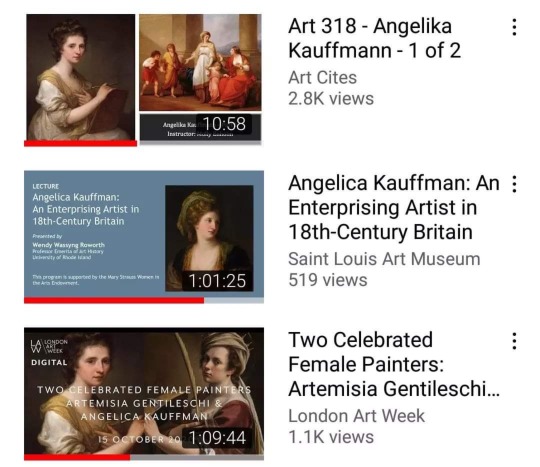
2022 REPOST: A special treat for the #artgeeks #artnerds or simply #artherstory Lovers as myself. #PalianShow
Art by Women - Women in Arts @abwwia
Doing my #ARTHerstory research on #AngelikaKauffmann I came across few video lectures on YouTube I would like to recommend to you today.
Here are three videos that I was watching,listening to and learning from. Abd now I am happy to recommend them to you. Here is todays #watchlater list:
1. Art 318 - Angelika Kauffmann by Molly Enholm: https://youtu.be/UMnoBTliKXk
The early career of Angelika Kauffmann, focusing on her years in England through 1781.
2. Angelica Kauffman: An #EnterprisingArtist in 18th-Century Britain: https://youtu.be/wQ26qBi_5Cg
Virtual Mary Strauss "Women in the Arts" Lecture with #WendyWassyngRoworth, Professor Emerita of Art History, University of Rhode Island
And last but not least!
3. Two Celebrated Female Painters: #ArtemisiaGentileschi & Angelica Kauffman https://youtu.be/uTwvgvjKyHg via #LondonArtWeek
As always I am inviting you to visit my blog where I introduce an Artist: share Her bio and selection of artworks:
Angelika Kauffmann, 1741-1807, Swiss https://palianshow.wordpress.com/2022/01/12/angelika-kauffmann-1741-1807/
Artemisia Gentileschi (Italy, 1593-1656)
https://palianshow.wordpress.com/2022/04/18/artemisia-gentileschi/
HAVE a great day, keep creating!
best, @poli_pal Poli Palian
__ #SwissArtist #SwissFemaleArtist #womensart #artbywomen #Neoclassicalart #artHerstory #arthistory #Herstory #greatwomenartists #greatwomenartists
#Angelika Kauffmann#Molly Enholm#art by women#art#Mary Strauss#Wendy Wassyng Roworth#Artemisia Gentileschi
1 note
·
View note